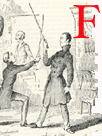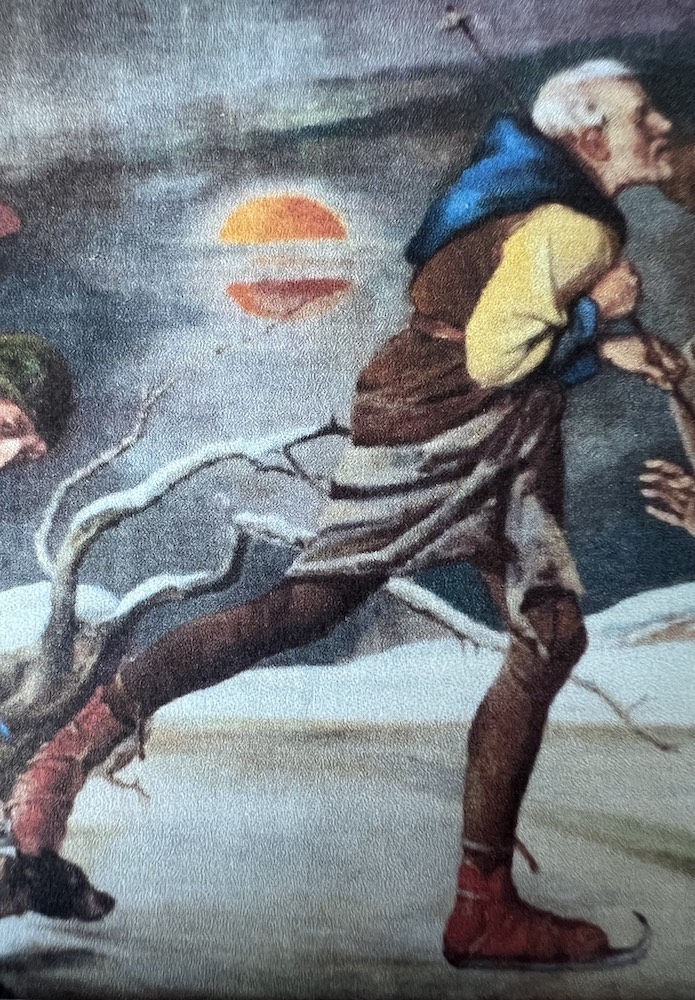The author would like to acknowledge the help of the Van Maurik family, Fred Weekes's descendants, as well as Goring archivist Janet Hurst, in preparing this short account.
Family Background

red Weekes was born on 25 January 1834 and grew up in Pimlico, London. Genealogical research and census returns reveal that his parents were Henry Weekes (1807-1877), the renowned sculptor, and Susan Hammond (1804-1846). Weekes's siblings were Julia (1830-1831), Henry (1832-1902), Mary Susan (1835-1912), Charles Edward (1839-1864), and Herbert William (1841-1914). Henry and Herbert were also artists. Weekes's mother died when he was 12; subsequently, his father married Eliza Alice Burrows (1823-1883). His half siblings were John Ernest (1853-1901) and Percy (1859-1934). There may have been two further half siblings, Alice Eliza, born in 1855 and Laure, born in 1857, but it has not been possible to confirm this.
Married life
Weekes married his artist model, Emma Julia Henshaw (1846-1883) on 4 January 1867. Their daughter, Emma Julia (1872-1923) was born on 5 August 1872, followed by their son Fredrick, who was born on 21 July 1874, but sadly died a little less than four months later, on 18 November 1874. Weekes was present at his son's death and was living at 33 Mildmay Grove, Islington, London, at the time. His personal life was difficult in other ways too. It was speculated that he was disowned by his father because he was living with Emma before they were married — or because they later divorced. At any rate, when Weekes's father died, he left £500 to his other children, but excluded Fred from his will. The divorce is a mattrer of record: Emma had an affair with her employer William Gramberg/Meyers and was living with him when they had their daughter Amelia (1876-1959). Weekes filed for divorce on 6 June 1878 and applied for custody of his daughter, however, there is no evidence that this was successful. Gramberg was ordered to pay £62 costs but he did not pay. Court records show that he was sentenced to six months in jail.
Career
Having grown up in a sculptor's family, Weekes embarked on a career in the art world. He enrolled at the Royal Academy of Art on 22 April 1853, his studentship lasting seven years. He first exhibited at the British Institution in 1854, at the tender age of 20, with a scene from As You Like It. He continued to develop his skills in the fine arts, exhibiting fifteen paintings at the Royal Academy from 1861-1871, and the Society of British Artists & the New Watercolour Society from 1863-1892 (along with various other galleries). During his lifetime he produced over forty paintings. But he was also interested in the world of design: he was a member of The British Society of Master Glass Painters, and was a designer for William Gualbert Saunders (1837-1923), who founded the firm of Saunders & Co. in 1869. Weekes was also an expert in medieval clothing and medieval armour; both of these feature in many of his works. Perhaps it was in this connection that he became known to the important architect and designer William Burges, for whom he did much of his painting and stained glass work.
Personality

Weekes as he depicted himself in the frieze at Insole Court (author's photograph).
No one knows much about Weekes's personality as a young man, but there is some discussion of it in connection with his work for Burges. Samuel Wesley Allen, Superintendent Engineer at the Locomotive and Mechanical Department of the Bute Docks in Carddiff, knew him when he washim as a "celebrated artist" and a friend (224), and recalled laughing over a comic sketch Weekes made of him being blown to pieces by an exploding boiler. Allen renewed this "old friendship" later, when he visited him in London and admired his collection of medieval armour (228). However, Weekes did not get on very well with Burges. According to J. Mordaunt Crook, "conscious perhaps of his own talent, [Weekes] seems to have chafed unhappily as Burges's satellite" (71).
Weekes was indeed an avid collector of medieval armour, which may have led to his original meeting with Burges; but this passion also seems to have been the cause of their eventual break from each other. Weekes would write to the periodical British Architect in 1881 in high dudgeon when the British Museum accepted Burges's collection of armour after his death, describing the collection as a mere accumulation of pieces by "an eccentric, and on these points perfectly ignorant individual" (407). When this view was queried in a subsequent issue of the periodical, on 2 September 1881, Weekes wrote in again on 16 September to press his point, repeating that Burges was his pupil in these matters, and not an apt one either (see pp. 438 and 467).
It is not surprising, then, to learn that when Weekes had a studio at the top of his brother Henry's house at 2 Pembridge Crescent, Kensington, a young family member described him as a "fierce old man with a parrot." At this stage of life, his relatives saw him as an eccentric old man. Family lore offers another anecdote: once, it seems, he strayed on to a golf course in search of fossils, another passion, and due to his scruffy clothing he was shouted at in the belief that he was stealing lost golf balls. Apparently, it was not the fact that he had been mistaken for a tramp that annoyed Weekes, but the fact that anyone could have thought him so stupid as to bother about balls.
The Last Years
Weekes's life had been an unsettled one. He is recorded as having lived at seventeen different properties in and around London, but never as having owned a property of his own. He last appeared on the 1921 census, living at 4 Chepstow Crescent, London. Also listed on this occasion is his daughter, Emma Julia; this gives the first direct evidence of contact between them in over forty years. Emma died in 1923, and Weekes eighteen months later.
Bibliography
Allen, Reminiscences. Cardiff: Western Mail, 1918. Internet Archive. Web. 12 October 2024.
Crook, J. Mordaunt. William Burges and the High Victorian Dream. Rev. ed. London: Fances Lincoln, 2013.
Weekes, Fred. "Mr Burges' Armour" (letter). The British Architect and Northern Engineer Vol. XVI (12 August 1881): 407.Google Books. Free ebook.
Created 11 October 2025